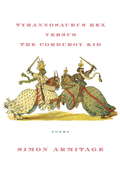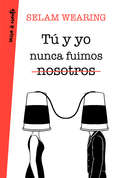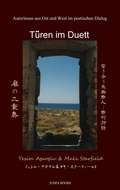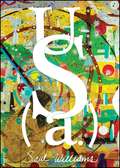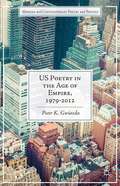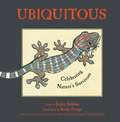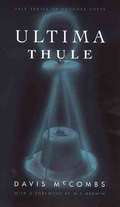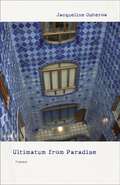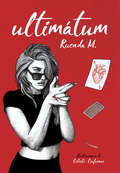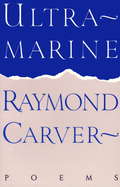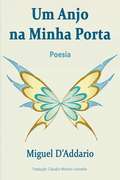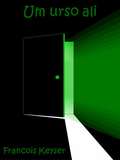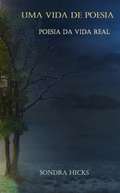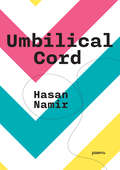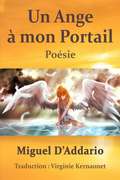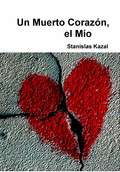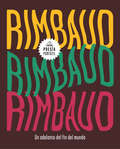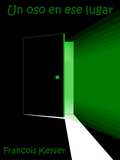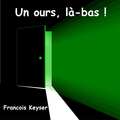- Table View
- List View
Tyrannosaurus Rex (Step into Reading)
by StorybotsThe wacky robots from the award-winning apps, videos, and Netflix show, Ask the Storybots, now star in their own early readers. This one is about everyone&’s favorite dinosaur!Fans of the StoryBots will recognize the colorful art from the hugely popular dinosaur video &“Tyrannosaurus Rex&” on YouTube. A gigantic body and super-sharp teeth make the Tyrannosaurus rex the most fearsome of the dinosaurs. Just don&’t make fun of those tiny arms! This rhyming Step 1 Science Reader will entertain while imparting simple facts about the most popular carnivorous dinosaur of all. Step 1 Readers feature big type and easy words for children who know the alphabet and are eager to begin reading. Rhyme and rhythmic text paired with picture clues help children decode the story. Accolades for the StoryBots digital media: Appy Award for Best Book AppTeacher's Choice Award Editor&’s Choice—Children&’s Technology Review Family Choice Award Parents&’ Choice AwardCynopsis Kids !magination Award for best educational mobile app
Tyrannosaurus Rex Versus the Corduroy Kid
by Simon ArmitageFrom one of the most important British poets at work today comes a brilliant new collection that meditates on human battles past and present, on youth and age, on monsters and underdogs, on the life of nations and the individual heart.In Tyrannosaurus Rex Versus the Corduroy Kid, we meet a writer who speaks naturally, and with frankness and restraint, for his culture. Armitage witnesses the pathos of women at work in the mock-Tudor Merrie England coffeehouses and gives us a backstage take on the world of Oliver Twist and the Artful Dodger. He makes a gift to the reader of the sympathy and misery and grit buried in his nation's collective consciousness: in the distant battle depicted in the Bayeux Tapestry and in the daily lives and petty crimes of ordinary people. In poems that are sometimes lyrical, sometimes brash and comic, and full of living voices, the extraordinary and the mythic grow out of the ordinary, and figures of diminishment and tragedy shine forth as mysterious, uncelebrated exemplars. Armitage tells us ruefully that "the future was a beautiful place, once," and with a steady eye out for the odd mystery or joyous scrap of experience, examines our complex present instead.AFTER THE HURRICANESome storm that was, to shoulder-charge the wallin my old man's back yard and knock it flat.But the greenhouse is sound, the chapel of glasswe glazed one morning. We glazed with morning.And so is the hut. And so is the shed.We sit in the ruins and drink. He smokes. Back when, we would have built that wall again.But today it's enough to drink and smokeamongst mortar and bricks, here at the empire's end.From the Hardcover edition.
Tú y yo nunca fuimos nosotros
by Selam WearingSelam Wearing se revela con su primer poemario como uno de los grandes talentos literarios de su generación. Su poética está llena de ternura, sensualidad, humor, imágenes muy certeras y comunicativas que rozan la anécdota y que hacen evidente la influencia de la poesía de la experiencia, el realismo sucio o el neorrealismo en su imaginario. Esto no es otro libro de poemas, soy yo pidiendo auxilio, pero nadie me socorre. He asumido que nunca nos olvidaremos. Cada vez que nos cruzamos sus ojos se revelan ante mí, nostálgicos de todo aquello que no hemos sido, preguntándose acaso si aún no es demasiado tarde. Pero ninguno hace nada. Ella se muerde el labio y mira a cualquier otra parte con los pensamientos clavados en mí. Yo acelero el paso, como si llegara tarde a donde nadie me está esperando. Prologado por Roger Wolfe.
Türen im Duett: Autorinnen aus Ost und West im poetischen Dialog
by maki starfield/Yesim AgaogleEin literarischer Dialog zweier Schriftstellerinnen aus verschiedenen Kulturen und Kontinenten, die das gemeinsam und getrennt Erlebte in Worte bringen.
US (a.)
by Saul WilliamsIn his greatly anticipated new full-length book of poetry, the first since The Dead Emcee Scrolls in 2006, &“the poet laureate of hip-hop&” (CNN) Saul Williams presents his ideas, observations, realizations, dreams, and questions about the state of America, the American psyche, and what it means to be American.After four years abroad, Williams returned to the United States and found his head twirling with thoughts on race, class, gender, finance, freedom, guns, cooking shows, dog shows, superheroes, not-so-super politicians—everything that makes up our country. US(a.) is a collection of poems that embodies the spirit of a culture that questions sentiments and realities, embracing a cross-section of pop culture, hip-hop, and the greater world politic of the moment. Williams explores what social media may only hint at—times and realities have changed; there is a connect and a disconnect. We are wirelessly connected to a past and path to which we are chained. Saul Williams stops and frisks the moment, makes it empty its pockets, and chronicles what’s inside. Here is an extraordinary book that will find its place in the hands and minds of a new generation.
US Poetry in the Age of Empire, 1979–2012
by Piotr K. GwiazdaExamining poetry by Robert Pinsky, Adrienne Rich, and Amiri Baraka, among others, this book shows that leading US poets since 1979 have performed the role of public intellectual through their poetic rhetoric. Gwiazda's argument aims to revitalize the role of poetry and its social value within an era of global politics.
US: Women
by Marjorie Fletcher"At its best, original, flat, urgent, the voice stays with us... an awkward, restless, honest presence, that won't sit down and talk, and won't go away."-Jean Valentine
Ubiquitous: Celebrating Nature's Survivors
by Joyce SidmanFrom the creators of the Caldecott Honor Book Song of the Water Boatman and Other Pond Poems...Ubiquitous(yoo-bik-wi-tuhs): Something that is (or seems to be) everywhere at the same time. Why is the beetle, born 265 million years ago, still with us today? (Because its wings mutated and hardened). How did the gecko survive 160 million years? (by becoming nocturnal and developing sticky toe pads.) How did the shark and the crow and the tiny ant survive millions and millions of years? When 99 percent of all life forms on earth have become extinct, why do some survive? And survive not just in one place, but in many places: in deserts, in ice, in lakes and puddles, inside houses and forest and farmland? Just how do they become ubiquitous?
Uju Lwezinkondlo: UEB Contracted
by N. A. Mahaye Z. E. SitholeUju Lwezinkondlo yi-antoloji eyiqoqo lezinkondlo ezibhalwe izimbongi ezehlukene. Yenzelwe ukusiza abafundi ukuba bafunde futhi baqonde ubunkondlo eBangeni le-12, Iqoqo libhalwe lagxiliswa ngokwezidingo zonke izidingo zohlelo lwemfundo i-CAPS. Uju Lwezinkondlo: • ihlelwe ngokomongo noma ingqikithi yezinhlobo zezinkondlo ukuze kubelula ukuqonda isakhiwo sezinkondlo • inomlandompilo wezimbongi ezikuleli qoqo lezinkondlo, ukwelekela abafundi ukuba bazi kabanzi ngempilo yezimbongi ukuze umsebenzi wezimbongi bawazi futhi bawuqonde kangcono • inencazelomagama (iglosari) etholakala ekugcineni kwebhuku, ukusiza umfundi ukuba aqonde amagama anqala obunkondlo asetshenziswe ngenkathi kuhlaziywa inkondlo ngayinye • inamanothi afundisayo ukusiza umfundi ukuba azi ukuthi inkondlo ihlaziywa kanjani ngokwemigomo yohlelo lwemfundo mayelana nokufundiswa kwezinkondlo ngokuphelele • inemibuzo nezimpendulo ukusiza umfundi ukuba azilolonge ngemibuzo, abheke futhi ezimpendulweni ukuthi bekumele aphendule kanjani, ngaleyo nabo akwazi ukuzimakela umsebenzi azenzela wona. Le antoloji yezinkondlo iwusizo olukhulu kumfundi osendleleni yokubhekana nezidingo zobunkondlo obunzulu kanye nokubhala izivivinyo ngempumelelo.
Uju Lwezinkondlo: UEB Uncontracted
by N. A. Mahaye Z. E. SitholeUju Lwezinkondlo yi-antoloji eyiqoqo lezinkondlo ezibhalwe izimbongi ezehlukene. Yenzelwe ukusiza abafundi ukuba bafunde futhi baqonde ubunkondlo eBangeni le-12, Iqoqo libhalwe lagxiliswa ngokwezidingo zonke izidingo zohlelo lwemfundo i-CAPS. Uju Lwezinkondlo: • ihlelwe ngokomongo noma ingqikithi yezinhlobo zezinkondlo ukuze kubelula ukuqonda isakhiwo sezinkondlo • inomlandompilo wezimbongi ezikuleli qoqo lezinkondlo, ukwelekela abafundi ukuba bazi kabanzi ngempilo yezimbongi ukuze umsebenzi wezimbongi bawazi futhi bawuqonde kangcono • inencazelomagama (iglosari) etholakala ekugcineni kwebhuku, ukusiza umfundi ukuba aqonde amagama anqala obunkondlo asetshenziswe ngenkathi kuhlaziywa inkondlo ngayinye • inamanothi afundisayo ukusiza umfundi ukuba azi ukuthi inkondlo ihlaziywa kanjani ngokwemigomo yohlelo lwemfundo mayelana nokufundiswa kwezinkondlo ngokuphelele • inemibuzo nezimpendulo ukusiza umfundi ukuba azilolonge ngemibuzo, abheke futhi ezimpendulweni ukuthi bekumele aphendule kanjani, ngaleyo nabo akwazi ukuzimakela umsebenzi azenzela wona. Le antoloji yezinkondlo iwusizo olukhulu kumfundi osendleleni yokubhekana nezidingo zobunkondlo obunzulu kanye nokubhala izivivinyo ngempumelelo.
Ultima Thule
by W. S. Merwin Davis Mccombs"The poems are set above and below the cave country of south central Kentucky, where McCombs lives. The book is framed by two sonnet sequences, the first about a slave guide and explorer at Mammoth Cave in the mid-1800s and the second about McCombs's experiences as a guide and park ranger there in the 1990s. Other poems deal with Mammoth Cave's four thousand year human history and the thrills of crawling into tight, rarely visited passageways to see what lies beyond. Often the poems search for oblique angles into personal experience, and the caves and the landscape they create form a personal geology.
Ultimatum from Paradise: Poems
by Jacqueline OsherowIn this collection, Jacqueline Osherow gives us perfectly formed, musical poems that glide between the worlds of art, architecture, literature, and religion. Traveling through Europe, Tel Aviv, and New York, Osherow observes with a keen eye the details of objects -- beautiful buildings and ancient artifacts -- and of the conversations and interactions she has with others. Finely constructed and always engaging, her poems uncover the startling truths of memory and coax our own forgotten moments from the recesses of the mind.
Ultimátum
by Ruenda M.Ruenda M. ha llegado a Montena y con él los versos más intensos y delicados. Ruenda hace una declaración de intenciones con cada uno de sus versos, su frases y sus fotografías. Sus textos tienen garra pero a la vez son delicados y generan la sensación de querer más. «Lo que tienes entre las manos, tan llenas de grietas como las mías, es un grito violeta; una revolución vestida de etiqueta, pero que sigue pidiendo limosna por las calles del querer. Esto es la capa más visible de un alma acostumbrada a huir del ruido para hacer eco en el papel.»
Ultramarine: Poems
by Raymond Carver"Mr. Carver is heir to that most appealing American poetic voice, the lyricism of Theodore Roethke and James Wright.... this book is a treasure, one to return to. No one's brevity is as rich, as complete, as Raymond Carver's." --New York Times Book Review. "Carver's gifts as a storyteller shine through his poetry.... Sometimes a Carver poem also works as a short story, with all its elements--character, diction, place, event--compressed intact into the brevity of verse. And sometimes Carver delivers the goods in pure lyrical form, in words as full of yearning and sensibility as those of a very young man, but poems possessing the hard-won qualities of focus, stillness and irony only rewarded by experience." --Los Angeles Times.
Ultramarine: Poems (Vintage Contemporaries)
by Raymond CarverOne of Raymond Carver&’s final collections of poetry, moving from the beauty of the natural world to thoughts of mortality and family and art. Throughout, Carver &“has the astonished, chastened voice of a person who has survived a wreck, as surprised that he had a life before it as that he has one afterward, willing to remember both sides&” (The New York Times Book Review).
Um Anjo na Minha Porta
by Miguel D'AddarioEste livro de poesia nasce a partir de um caso estranho, porque surge logo depois de contatar uma seguidora das redes sociais, e sem sequer me conhecer me conta uma história pessoal e profunda. Um relato secreto e doloroso, uma história de morte a amor. Eu interpretei este encontro como se fosse um anjo que veio me contar algo, me dizer verdades e me deixar uma mensagem final. Simplesmente cheguei a uma conclusão e lhe disse: - É através da dor por onde entra a luz ou a escuridão; Ela me respondeu rapidamente algo e nunca mais soube dela. E foi por isso que decidi chamar este livro de: “Um anjo no meu portal” Um livro que só planta posições frente a situações da vida. Filosóficas, existenciais e inclusive de busca interior; mas com reflexões no final.
Um urso ali
by François KeyserRick encontra um urso em sua casa depois de escurecer e fica aterrorizado. Seus pais não conseguem encontrar o urso e pensam que ele está tendo pesadelos. Mas o urso é real. A questão é, porém, o urso é amigo ou inimigo? “Um urso ali” é a história que as crianças vivem todas as noites. É sobre o medo das crianças do escuro e monstros no escuro. Propõe-se mostrar às crianças que elas não têm nada a temer e que os brinquedos que às vezes acham que se tornam assustadores depois de escurecer, não são realmente assustadoras. Todos podemos nos relacionar com nossos medos infantis da escuridão como filhos ou pais. Esta história lê bem ensinando as crianças a não ter medo do escuro.
Uma vida de poesia
by Sondra Hicks Luciana DuarteEscrevo com meu coração sobre coisas na minha vida que me inspiram. Então, eu quero me expressar de muitas maneiras para os outros, mas eu sempre temi estar emocionalmente fechado. Como uma jovem mulher, eu era conhecida por escrever mais do que falar. Muitos dos meus poemas foram perdidos ou destruídos ao longo da minha vida. Então eu coloquei o melhor do que eu ainda tinha na minha coleção. Espero compartilhar meus altos e baixos ea perspectiva única que estou dando algo para os outros se relacionarem.
Umbilical Cord
by Hasan NamirDear Child, Once upon a time, Your dads wanted to have a baby. It was a life-long dream of ours. We were always hopeful.Lambda Literary and Stonewall Book Award-winner Hasan Namir shares a joyful collection about parenting, fatherhood and hope. These warm free-verse poems document the journey that he and his husband took to have a child. Between love letters to their young son, Namir shares insight into his love story with his husband, the complexities of the IVF surrogacy process and the first year as a family of three. Umbilical Cord is a heartfelt book for parents or would be parents, with a universal message of hope.
Un Ange à mon Portail: Poésie
by Miguel D'AddarioCe petit chef d’œuvre, réunissant près de quatre-vingts poèmes, est à ce jour le livre le plus traduit de Miguel D’Addario. Écrit en espagnol à l’origine, il est désormais traduit en italien, anglais, portugais, grec et français. Nous sommes plongés dans un voyage intérieur à travers des thèmes universels comme l’amour, la vie, la mort, les obstacles, les bonheurs, Dieu, notre existence à travers notre recherche intérieure, notre réveil, notre évolution... Parfois l’auteur nous interpelle, nous secoue, souhaitant nous faire prendre conscience qu’il est temps de s’éveiller. L’aspect social est un thème de prédilection, car inconsciemment, nous sommes sous l’influence de la société. Mais sans le moindre questionnement, ne risquons-nous pas de passer à côté de l’essentiel ? L’adversité pourrait-elle être perçue de manière positive, comme une expérience nécessaire permettant le réveil puis l’évolution ? Les éléments perturbateurs apparaitraient alors comme des médiateurs entre le monde tangible et intangible. Et finalement l’amour apparait aussi comme une réponse, poème Limites : « (…) Embrasse comme si tu perdais ton corps demain et aime comme si c’était le dernier jour de ta vie. » Un recueil de poésie qui permet de faire face aux déboires de la vie de manière positive et de croître en se recentrant sur notre essentialité.
Un Muerto Corazón, el Mío
by Stanislas KazalEl Muerto Corazón (Depósito legal julio de 2008) era un libro clandestino vendido bajo el manto a la salida de prestaciones en el bajo mundo parisino y bordelés hasta 2010. Esta es una reedición final de este libro raro y agotado (coleccionista) donde el desgarro y revuelta se confundían. Por lo tanto, este opus se basa en otro publicado por autor de manera clandestina en 2008.
Un adelanto del fin del mundo (Flash Poesía #Volumen)
by Arthur RimbaudUn adelanto del fin del mundo, de la colección «Poesía portátil», es una colección de embates apasionados de Arthur Rimbaud, un rebelde que supo hurgar en el infierno para revolucionar la poesía. Rimbaud rompió las costuras de la poesía moderna cuando todavía no había cumplido veinte años. A tan pronta edad deflagró también los límites de la bohemia. Rebelde ejemplar, entendía la figura del poeta como una suerte de vidente de una vida nueva, un icono romántico movido por una fiebre que estrellaba en decenas de hojas sueltas. Reunimos ahora algunos de sus principales poemas, resultado de sus años en París, de la truculenta pasión que le unió a Paul Verlaine, del malvivir, el emborracharse, del no ser feliz pero ser siempre salvaje.
Un oso en ese lugar: Una historia para niños, para enseñarles que no deben temer a la oscuridad
by Francois KeyserUna historia que le enseña a los niños que no tienen que temer a la oscuridad. Juan encuentra un oso en su casa luego de que oscurece, y está aterrorizado. Sus padres no pueden encontrar el oso y piensan que está teniendo pesadillas. Pero el oso es real. La pregunta es, sin embargo, ¿es el oso un amigo o un enemigo? “Un oso en ese lugar” es la historia que los niños viven todas las noches. Es acerca del miedo de los niños a la oscuridad y a los monstruos en ella. Tiene la intención de mostrar a los niños que no tienen nada que temer y que los juguetes que a veces piensan que se vuelven tenebrosos en la oscuridad, en realidad no lo son. Todos podemos sentirnos identificados como niños o padres con nuestro miedo a la oscuridad en la infancia. Escrita en rima, esta historia se lee fácilmente y es buena para actuar y ser leída a niños, ayudándoles a no tener miedo a la oscuridad al recordar la historia.
Un ours, là-bas !
by Francois KeyserRick est terrorisé lorsqu’il aperçoit un ours dans sa maison à la tombée de la nuit. Les parents du garçonnet pensent que leur fils fait des cauchemars puisqu’ils ne trouvent aucun ours. Ce dernier est pourtant bel et bien réel. La véritable question est : l’ours est-il un ami ou un ennemi ? « Un ours, là-bas ! » raconte l’histoire que les enfants vivent chaque nuit. Ce récit parle des enfants qui redoutent l’obscurité et les monstres qui peuvent en surgir. Il espère montrer aux enfants qu’il n’y a pas de raison d’avoir peur et que les jouets qui les effraient lorsqu’ils sont plongés dans le noir ne font en réalité pas peur du tout. Que nous soyons enfants ou parents, ce sujet nous évoque à tous un sentiment familier. Écrite en vers, cette histoire se lit facilement et se prête au jeu théâtral ainsi qu'à l’apprentissage de récitations, tout en aidant les enfants à se souvenir qu’il ne faut pas céder à la peur.
Un país mundano
by John AshberyEl mejor libro del poeta norteamericano más importante de nuestros días. Con más de ochenta años, John Ashbery es el mejor poeta norteamericano vivo, como demuestra Un país mundano, su libro más reciente, una secuencia de poemas donde, lejos de repetirse, sigue indagando en el lenguaje, abriendo nuevos caminos, creando nuevas figuraciones. Romántico y escéptico, surrealista y preciso, Ashbery nos da en esta nueva y destellante obra un nuevo testimonio de su sabiduría, de su valentía y de su insobornable exigencia.

